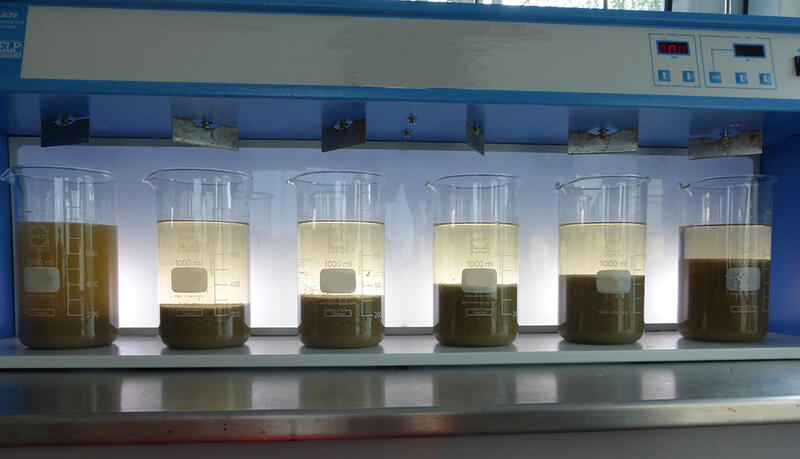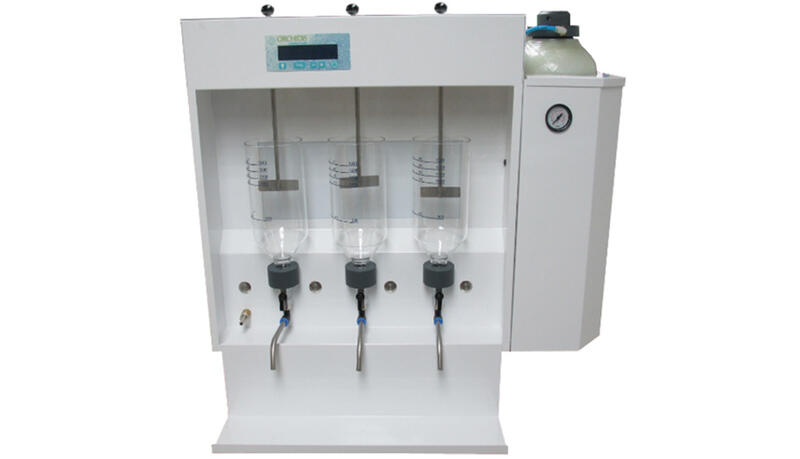
Physico-chemical treatment test
Evaluate the efficiency of coagulation-flocculation (Jar test and Flottatest)
- Evaluate the efficiency of physico-chemical treatments for the removal of suspended solids (SS) and colloids.
- Perform decantation tests (Jar test) to optimize the dosage of flocculants and coagulants
- Evaluate and optimize the separation of colloids by micro-flotation in the laboratory
General informations
Wastewater treatment plant in paper industry consist of primary physico-chemical treatment followed by biological treatment.The primary treatment is carried out by a physico-chemical settling tank or a microflotation unit. It allows the removal of suspended matter and colloids after addition of coagulants / flocculants.
Effective operation of the primary treatment is a key element for effective operation of the whole wastewater treatment plant and the compliance of the discharges.
The effluent treatment laboratory has equipment to perform Jar test (decantation test) or micro-flotation test in order to optimize the dosage of coagulants and flocculants, or to test the separation of specific effluents.
These tests allow the Water Energy Environment team to propose solutions to improve primary treatments for the removal of suspended solids and colloids.
Technical Data and Achievements
Jar test (decantation test)
The Jar test (GPB FLC) makes it possible to assess the ability to settle suspended solids under controlled and reproducible conditions (stirring speed, geometry, coagulant / flocculant concentrations). The Jar test consists of six beakers into which the effluent is introduced with different types and dosages of organic or inorganic coagulants / flocculants.
The test determines the optimum coagulant / flocculant concentration and agitation rate to obtain the least turbid supernatant and the densest settled flocs.
Laboratory microflotation test
The ORCHIDIS Flottatest is a device designed to test the ability of particles flotation by the injection of micro air bubbles.
The Flottatest comprises three flotation vessels in which the effluent to be treated is placed with coagulant / flocculant at different concentrations under controlled agitation. The pressurized water, injected at the base of the vessels, releases micro air bubbles that attach to the particles, to study their ability to float. It is thus possible to determine the optimum concentration and optimum agitation for which the water is the least turbid and the flotation foams the most densest.
 |
 |
|
| Jar test (Flocculation Test) | Microflotation (Laboratory test) |